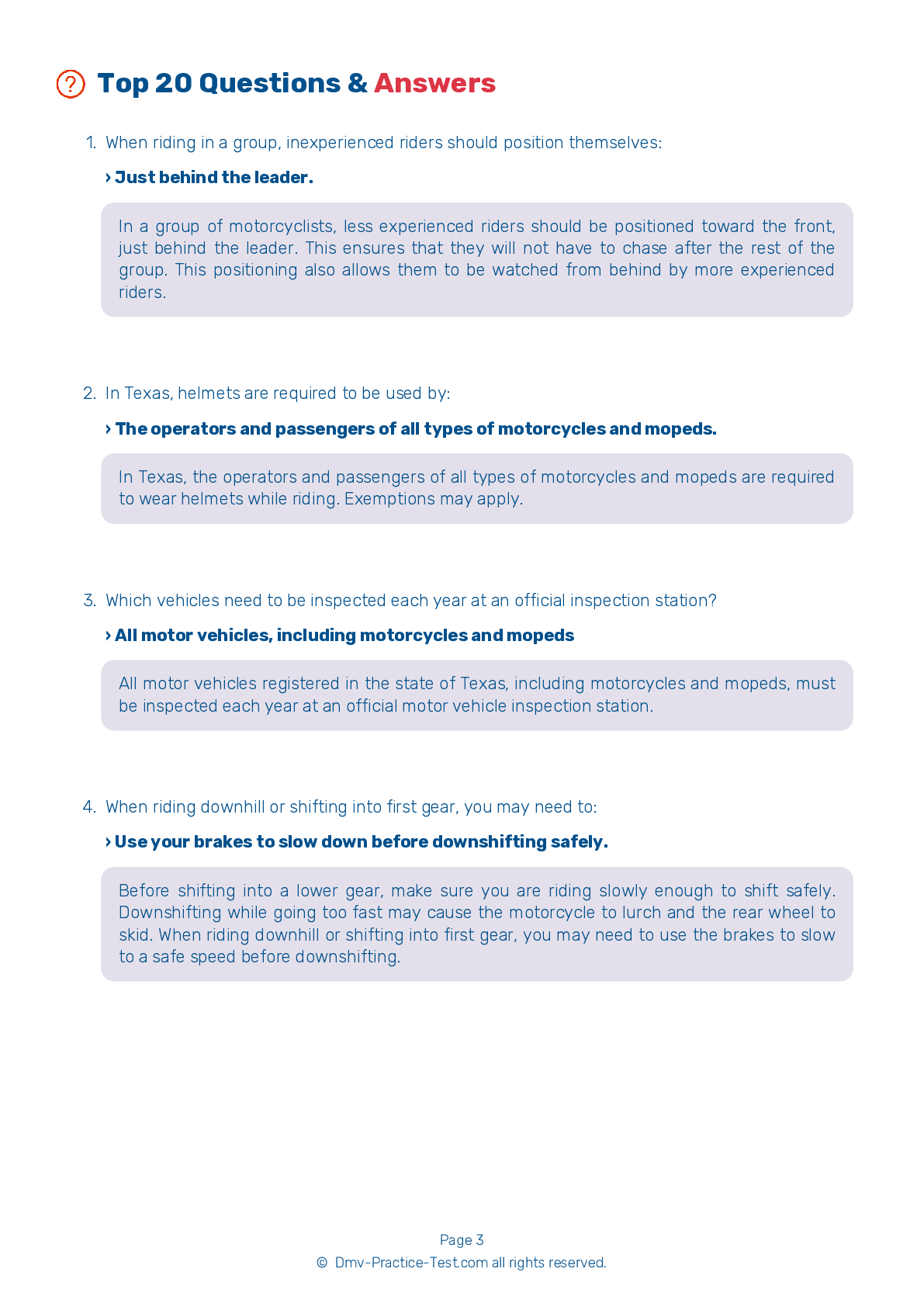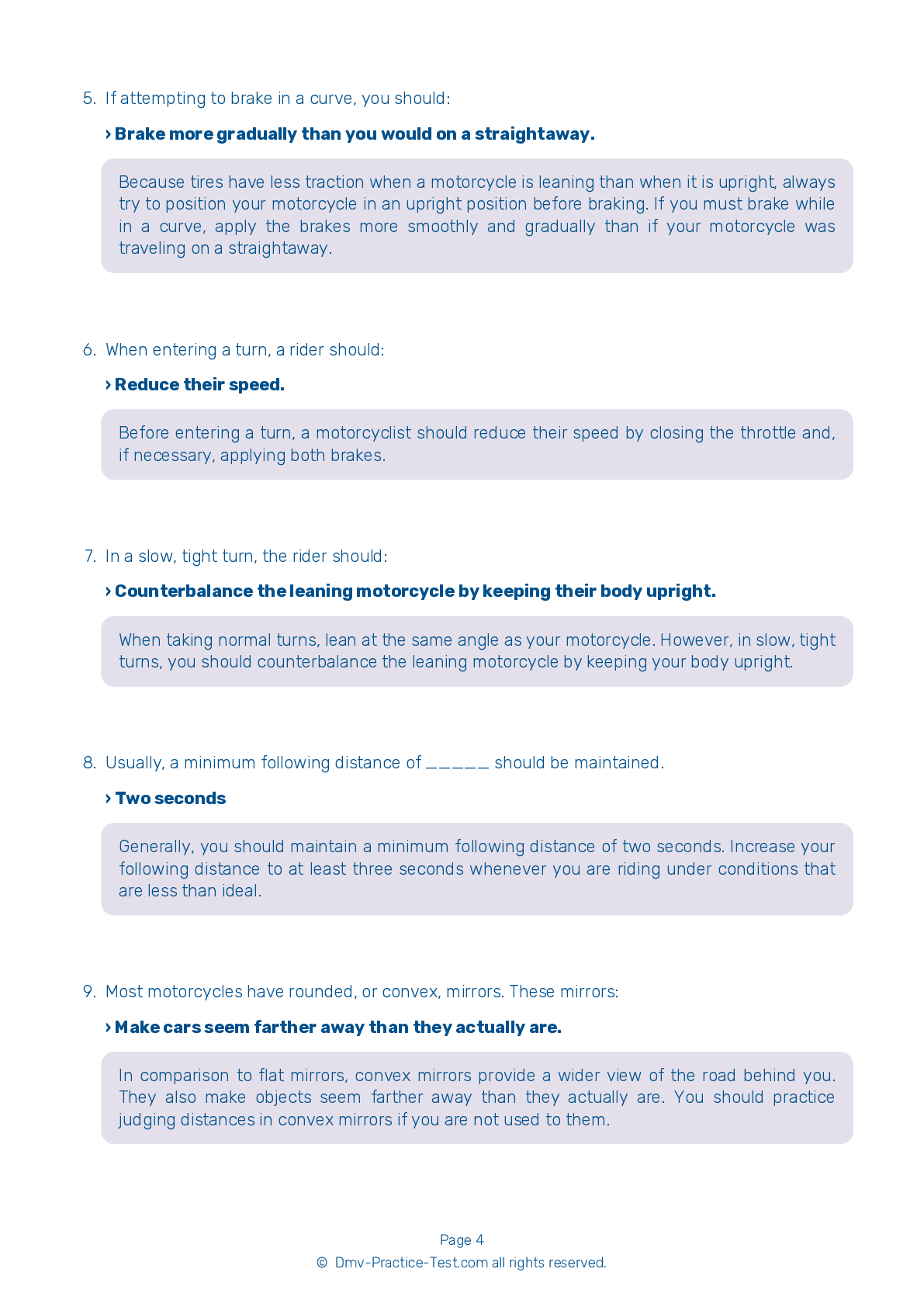Motorcycle Test | License TX 2025 | FREE Online Practice! #4 Page 4 of 4
Take this FREE motorcycle test (license in TX 2025) to check your knowledge of the road rules. To improve your results, download a motorcycle handbook online, study theory, and practice for free on our website. Still worried about how to get a motorcycle license in Texas in 2025? Check our website for more sample tests, train as much as possible, and boost your grades!
16 . If your motorcycle starts to wobble, it is best to:
Do not try to accelerate out of a wobble because doing so will only make the motorcycle more unstable. Instead, grip the handlebars firmly, slow down by gradually closing the throttle, move your weight as far forward and downward as possible, and pull off the road as soon as you can. Avoid applying the brakes, as this may also worsen the wobble.
17 . A passenger on a motorcycle should:
Passengers should get on a motorcycle only after the engine has been started and the transmission is put in neutral. They should sit as far forward as possible without hindering the operator's control of the motorcycle and should hold onto the operator's waist, hips, or belt.
18 . Which of the following surfaces is unlikely to provide poor traction for motorcyclists?
A number of surfaces can provide poor traction for tires. Wet pavement; roads covered in loose gravel or sand; muddy, snowy, or icy areas; painted lane markings; and metal covers and plates in the road can be more hazardous for a motorcyclist than dry pavement.
19 . To reduce your reaction time, you should:
In potential high-risk areas, such as near intersections, shopping areas, school zones, and construction zones, cover the clutch and both brakes to reduce the time you will need to react to potential hazards.
20 . When riding with a passenger, you may need to adjust:
It is a good idea to add a few pounds of pressure to your tires if you plan to carry a passenger. Also, adjust the suspension to handle the additional weight.
See the exact questions that will be on the 2025 Texas DMV exam.
99.2% of people who use the cheat sheet pass the FIRST TIME
Jeneen was tired of paying $5/gallon. She got herself a scooter that required the motorcycle license. She studyed the motorcycle test cheat sheet and passed her test the next day!
Christopher tells us how he knew nothing prior to obtaining the motorcycle study guide, and he only got one question wrong because he clicked on the wrong answer by mistake.



